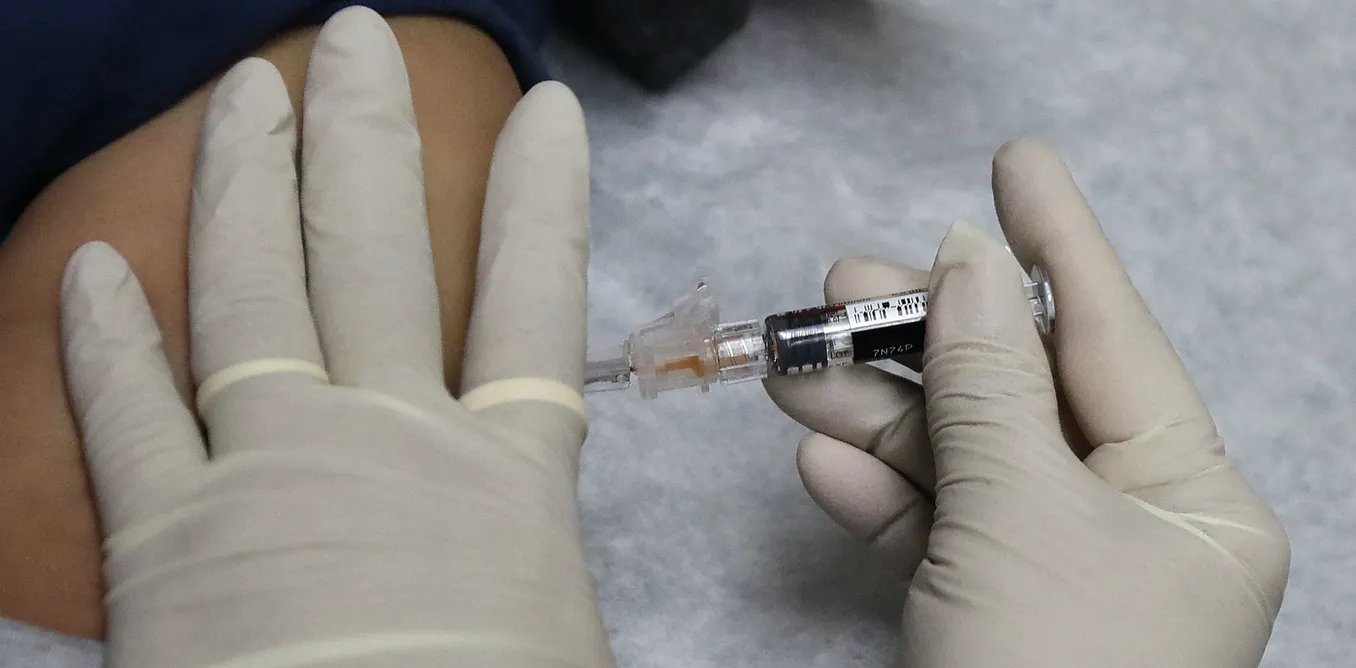The government spent twice what it needed to on economic support during COVID, modelling shows
- Written by Chris Murphy, Visiting Fellow, Economics (modelling), Australian National University

The independent inquiry[1] into the government’s COVID response is due to report on October 25.
As part of its investigation into the government’s economic responses, I briefed it on the findings of my economic modelling[2], using the sort of model I helped design for the Australian Treasury and consulting firms including Econtech and Independent Economics, specially customised for this study.
I found that government responses such as JobKeeper and the Jobseeker Supplement were initially successful. They reduced the peak rate of unemployment by two percentage points, or by more if we count workers who are stood down as employed.
But they lingered too long, ultimately providing $2 of compensation for every $1 of private income lost to COVID.
Government support was essential
Some parts of the economy were deeply affected by the COVID shutdowns which began in early 2020, others much less so.
It is widely accepted[3] that the best response to that (unusual) circumstance is to replace the income those workers and businesses lose. This means, for example, when movie theatres close, the government should replace the incomes of their workers.
This has two benefits. The first is to allow movie theatre workers to maintain their normal spending, stopping the downturn spreading to unrestricted industries. The second is to ensure movie theatre workers don’t have to bear an unfair share of the cost of measures put in place to protect everyone’s health.
Around one sixth[4] of the Australian economy was severely restricted by government measures in the early months of COVID.
This made measures such as JobKeeper[5], the Boosting Cash Flow for Employers[6] program and the JobSeeker Supplement[7] appropriate.
Too much support for some, too little for others
The government spent $144 billion on these three programs, and my modelling finds the total was about right to compensate for the early losses of income.But the pattern of compensation was wide of the mark, with a mix of overcompensation and undercompensation.
JobKeeper was designed to guarantee workers a minimum income rather than compensate them for lost income. This meant typical full-time workers were undercompensated while typical part-time workers were overcompensated.
For businesses, the compensation for lost profits depended on workers being active, which meant the firms that lost the most because they had suspended their entire operations got no compensation for losing their entire profits even though some of their expenses continued.
Better programs were put in place in 2021 when the Delta wave of COVID struck. A COVID disaster payment[8] more accurately compensated workers for lost hours, and programs such as NSW JobSaver[9] more accurately targeted lost profits.
Extra support for the entire economy wasn’t needed
In principle, well-designed compensation for the parts of the economy that were actually shut down would have been enough to support the rest of the economy, but despite this, the government also announced broader supports aimed at the entire economy.
Among them were bringing forward the so-called Stage 2 tax cuts[10] and allowing businesses to immediately expense[11] equipment.
These general stimulus measures almost doubled the size of stimulus from $219 billion to $428 billion. Besides being large and unnecessary, most of the general stimulus was delivered late, after the worst of the pandemic was over.
How it could have been done better
I have modelled what could have happened if the government had only spent on the health measures that were clearly warranted and had limited its compensation to income actually lost at the time it was lost.
This so-called shorter stimulus[12] scenario also includes a more usual response to economic recovery by the Reserve Bank in which it began lifting interest rates one year earlier, in May 2021 instead of May 2022.
In the shorter stimulus scenario, the Reserve Bank’s cash rate would by now be 2.85% instead of 4.35% because of lower inflation. Equally, in two or three years interest rates are similar in both scenarios once the economy has stabilised.
Australia’s unemployment rate would be higher than it is now at about 5.1% instead of 4.2% as it glides towards a sustainable equilibrium rather than having been pushed below it.
This glide path keeps inflation lower by avoiding a boom and bust and results in the same endpoint for unemployment.
Inflation would have peaked much lower at about 5% instead of about 7%.
About 1.4% percentage points of the reduction would have been due to better fiscal (spending and taxing) policy and about 0.7 points due to better management of interest rates.
In addition, the government would have saved about $209 billion in avoidable spending and government debt.
Nevertheless, even if the government had limited its response to the more targeted measures modelled in the shorter stimulus scenario, inflation would have reached 5% and interest rates and government debt would have still climbed, but by less.
Hindsight can help
The government’s responses to COVID were developed quickly at a time when no one knew what was going to happen, which makes some overcompensation understandable.
But this doesn’t mean we shouldn’t examine what happened in order to work out how it could have been done better.
Australia will be hit by future pandemics and pandemic-like crises, which means it’s important to learn from our mistakes. Next time the government should concentrate on replacing income where and when it is lost.
References
- ^ independent inquiry (www.pmc.gov.au)
- ^ economic modelling (taxpolicy.crawford.anu.edu.au)
- ^ widely accepted (www.aeaweb.org)
- ^ one sixth (taxpolicy.crawford.anu.edu.au)
- ^ JobKeeper (www.ato.gov.au)
- ^ Boosting Cash Flow for Employers (www.ato.gov.au)
- ^ JobSeeker Supplement (www.servicesaustralia.gov.au)
- ^ COVID disaster payment (ministers.treasury.gov.au)
- ^ NSW JobSaver (federalfinancialrelations.gov.au)
- ^ Stage 2 tax cuts (archive.budget.gov.au)
- ^ immediately expense (www.myob.com)
- ^ shorter stimulus (taxpolicy.crawford.anu.edu.au)
















